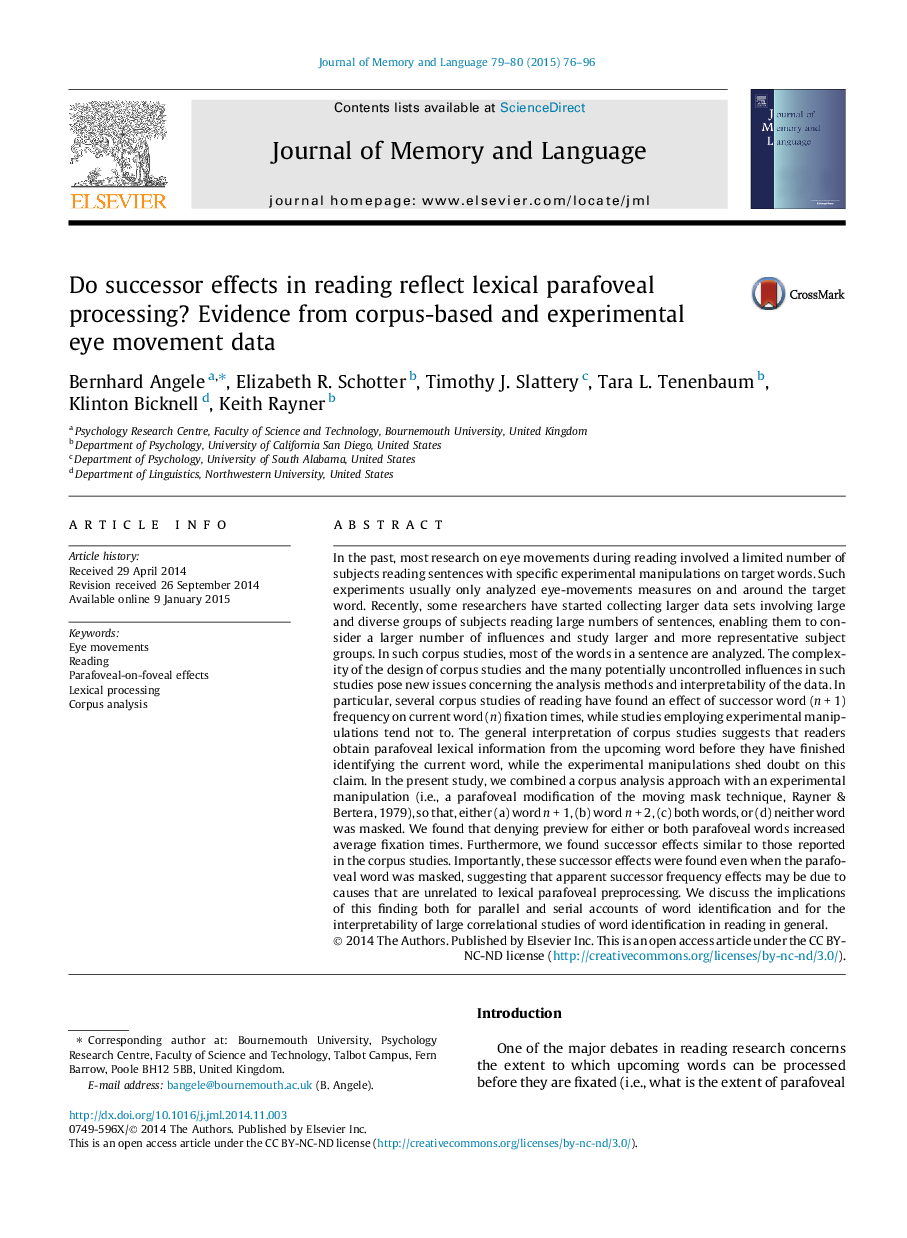| کد مقاله | کد نشریه | سال انتشار | مقاله انگلیسی | نسخه تمام متن |
|---|---|---|---|---|
| 7297102 | 1474639 | 2015 | 21 صفحه PDF | دانلود رایگان |
عنوان انگلیسی مقاله ISI
Do successor effects in reading reflect lexical parafoveal processing? Evidence from corpus-based and experimental eye movement data
ترجمه فارسی عنوان
آیا اثر جانشین در خواندن، پردازش واژگانی پارافوالال را بررسی می کند؟ شواهد حاصل از داده های حرکات چشم مبتنی بر کپسول و آزمایش
دانلود مقاله + سفارش ترجمه
دانلود مقاله ISI انگلیسی
رایگان برای ایرانیان
کلمات کلیدی
موضوعات مرتبط
علوم زیستی و بیوفناوری
علم عصب شناسی
علوم اعصاب شناختی
چکیده انگلیسی
In the past, most research on eye movements during reading involved a limited number of subjects reading sentences with specific experimental manipulations on target words. Such experiments usually only analyzed eye-movements measures on and around the target word. Recently, some researchers have started collecting larger data sets involving large and diverse groups of subjects reading large numbers of sentences, enabling them to consider a larger number of influences and study larger and more representative subject groups. In such corpus studies, most of the words in a sentence are analyzed. The complexity of the design of corpus studies and the many potentially uncontrolled influences in such studies pose new issues concerning the analysis methods and interpretability of the data. In particular, several corpus studies of reading have found an effect of successor word (n + 1) frequency on current word (n) fixation times, while studies employing experimental manipulations tend not to. The general interpretation of corpus studies suggests that readers obtain parafoveal lexical information from the upcoming word before they have finished identifying the current word, while the experimental manipulations shed doubt on this claim. In the present study, we combined a corpus analysis approach with an experimental manipulation (i.e., a parafoveal modification of the moving mask technique, Rayner & Bertera, 1979), so that, either (a) word n + 1, (b) word n + 2, (c) both words, or (d) neither word was masked. We found that denying preview for either or both parafoveal words increased average fixation times. Furthermore, we found successor effects similar to those reported in the corpus studies. Importantly, these successor effects were found even when the parafoveal word was masked, suggesting that apparent successor frequency effects may be due to causes that are unrelated to lexical parafoveal preprocessing. We discuss the implications of this finding both for parallel and serial accounts of word identification and for the interpretability of large correlational studies of word identification in reading in general.
ناشر
Database: Elsevier - ScienceDirect (ساینس دایرکت)
Journal: Journal of Memory and Language - Volumes 79â80, FebruaryâApril 2015, Pages 76-96
Journal: Journal of Memory and Language - Volumes 79â80, FebruaryâApril 2015, Pages 76-96
نویسندگان
Bernhard Angele, Elizabeth R. Schotter, Timothy J. Slattery, Tara L. Tenenbaum, Klinton Bicknell, Keith Rayner,
